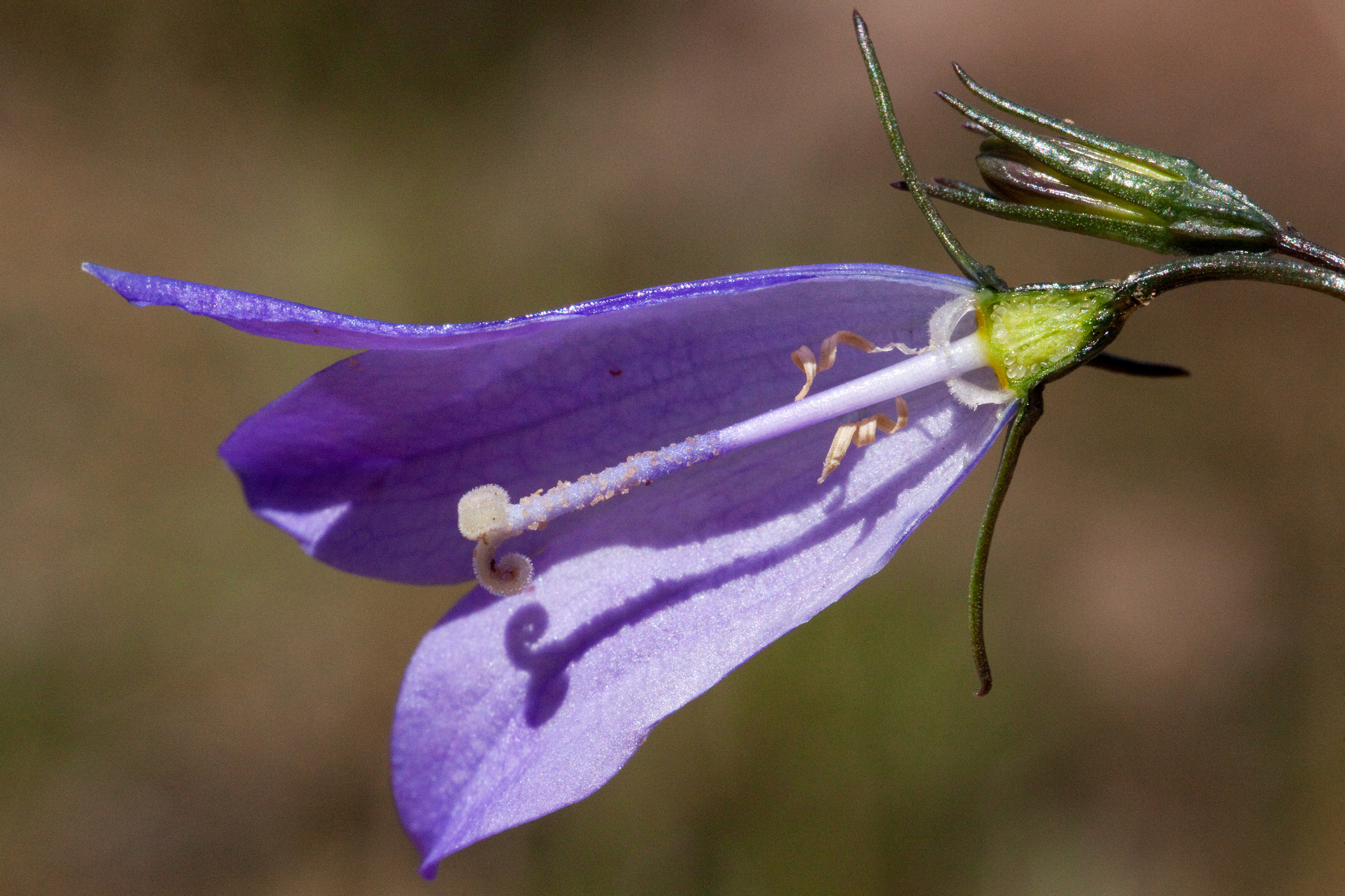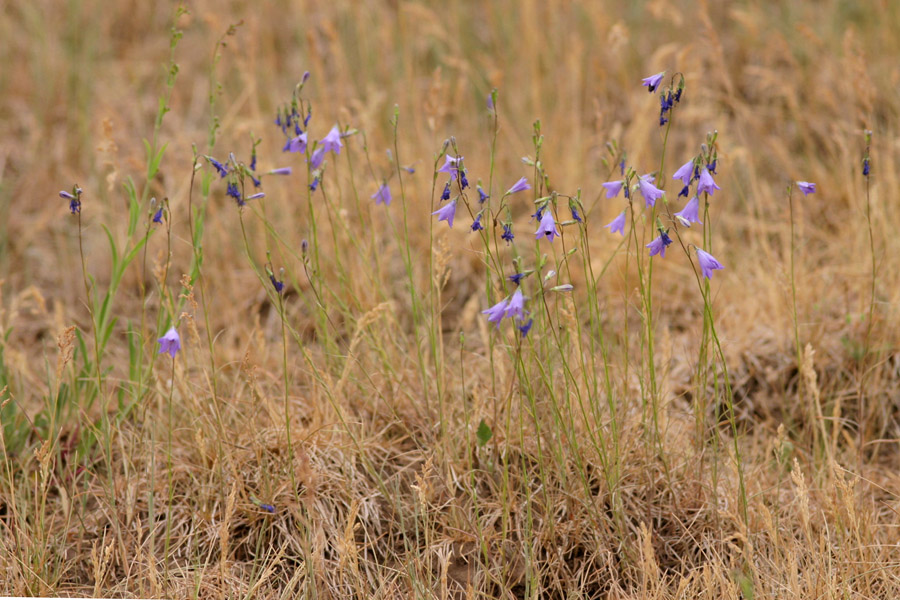Selected Plants of Navajo Rangelands
Bluebells
Dahiitiíhídą́ą́’dootł’izhí
(a.k.a. American bellflower, Bluebell bellflower, Harebell)

Bluebells are herbaceous perennials, growing up to 18 inches tall. There are one to several very slender stems, hairless to slightly hairy, and containing a milky sap. The basal stems are creeping. They reproduce by seed and by the spreading of rhizomes, often forming colonies. They flower from May to August. The bell-shaped blue flowers measure 1/2 to 1 inch and are slightly nodding, with short lobes. The flower stalk arises six inches above dark green foliage. The flowers may be solitary, but up to 15 flowers may be attached up the stem (raceme). The sepals are 1/4 to 1/2 inch long; stalks of single flowers (pedicles) are hairless; styles are shorter than the petals; anthers are ¼ to ½ inch long. Seeds are small, with three capsules (trilocular). There are two different types of leaves present. Basal leaves are round, forming a rosette. They have a distinct leaf stalk (petiole), are broad, and decrease late in the season. The leaves on the erect part of the stem are long and narrow with alternate attachment. There are 10 to 22 leaves, 3/8 to 3 inches long and 1/32 to 5/8 inch wide; leaf bases and petioles are hairless. All leaves are dark green.
The plant is found from low meadows to subalpine regions ranging from 5,000 to 12,000 feet in elevation. It is adapted to full or partial sunlight and tolerates drought. It grows best in rich, well-drained, moist soil. It can tolerate a range of soil pH, and can thrive in acid and calcareous areas. Bluebells are often used as a plant in flower gardens. This plant does reseed itself quite vigorously, and can become aggressive and weedy.
*Description based on Utah State University's Range Plants of Utah description.


Copyright 2018 New Mexico State University. Individual photographers retain all rights to their images. Partially funded by the Western Sustainable Agriculture Research and Education Program (westernsare.org; 435.797.2257), project EW15-023. Programs and projects supported by Western SARE are equally open to all people. NMSU is an equal opportunity/affirmative action educator and employer..
NMSU does not discriminate on the basis of age, ancestry, color, disability, gender identity, genetic information, national origin, race, religion, retaliation, serious medical condition, sex (including pregnancy), sexual orientation, spousal affiliation or protected veteran status in its programs and activities as required by equal opportunity/affirmative action regulations and laws and university policy and rules. For more information please read the NMSU Notice of Non-discrimination (opens in new window).

